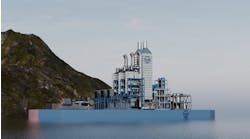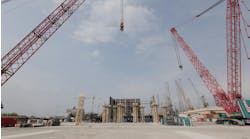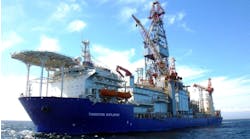Over the past 100 years of developing the world's hydrocarbon reserves, the petroleum industry has found that no single entity possesses all the technology, skill, and expertise needed to safely and productively tap into these reserves in the most efficient and cost-effective way. From the early days of Drake, through the formative years of rotary drilling, then to the hyper-challenging move to develop offshore and subsea reserves, success has been based on a sometimes uneasy relationship between the oil companies and their teams of contractors and suppliers who provide the goods and services necessary to access reservoirs and produce reserves economically.
During the '60s, '70s, and even into the early '80s, oil and gas companies spent huge amounts of money to develop their own technologies for exploring and producing in the deep oceans. These technology pioneers forged relationships with key individuals and their contracting companies, and worked tirelessly as a team to prove to the world that hydrocarbons could be safely and economically produced in deepwater, which at that time was only around 3,000 ft (914 m). These tremendous pioneering accomplishments were made possible through collaboration and good partnering behaviors with the entire team of operators, contractors, and service providers acting seamlessly as a single entity.
The '80s brought a changing of the guard in the offshore technology arena. After the bust of the mid-1980s, oil company R&D budgets were slashed, and their management was no longer focused on developing enabling technology. Survival of the business became the highest priority, and professionals in various business disciplines were brought in to help the oil companies focus on their commercial practices. Corporate procurement departments were set up to take over the responsibilities that the projects and technology centers once had for working with contractors. The term "three bids and a buy" became the mantra of the day, and the result was that much of the contractor base stopped developing technology and focused on the cost side of the equation with well documented results.
Though the '90s saw the widespread application of horizontal drilling and strides in reservoir simulation technology, very little progress was made in developing technology for the next generation of offshore subsea installations, even though many oil companies had spent millions on leases in water depths of up to 10,000 ft (3,048 m). In the mid- to late-'90s, however, a few key oil company executives noted that their portfolio of prospects would require investing in the development of a new generation of subsea equipment to access their deepwater reserves economically and safely. Independently, Shell, Oryx Energy (now Anadarko), and Statoil, with the leadership of their key executive and management teams, quickly came to the conclusion that the most effective way to meet their needs for new technology development, total cost reduction, and dramatically improve production uptime was to work directly with selected key contractors in a partnership much the same as in the early days of the industry.
The difference this time was that the focus was on the life of the field, not just on the initial installation and functionality. It also focused on designing a class of equipment for a portfolio of prospects, not custom kit for each one. This enabled standardization, which has proven over many years to reduce hardware cost and installation time, and to maximize uptime and serviceability once installed.
Nobody likes to install "Serial #1" of anything, but in order to advance the technology that will produce lower total cost of ownership and higher lifetime well production, a close partnership between operators and key contractors is absolutely essential. By working and behaving as a seamless portfolio team, from drilling through installation, production, and abandonments, the entire value chain can be optimized and the next generation of challenging deepwater fields can be developed and produced more economically.
Forming a true partnership is hard work. The behaviors must be consistent and collaborative. The commercial aspects of an operator/contractor relationship make things challenging, but innovative contracting and an understanding of what drives each others' success has proven to work. Partnering between an operator and contractor is time-tested, the benefits are clear and demonstrable, and it may be the only way our industry will make the necessary progress to meet the challenges of tomorrow.
Brad Beitler
Vice President, Technology
FMC Technologies
This page reflects viewpoints on the political, economic, cultural, technological, and environmental issues that shape the future of the petroleum industry. Offshore Magazine invites you to share your thoughts. Email your Beyond the Horizon manuscript to David Paganie at[email protected].


